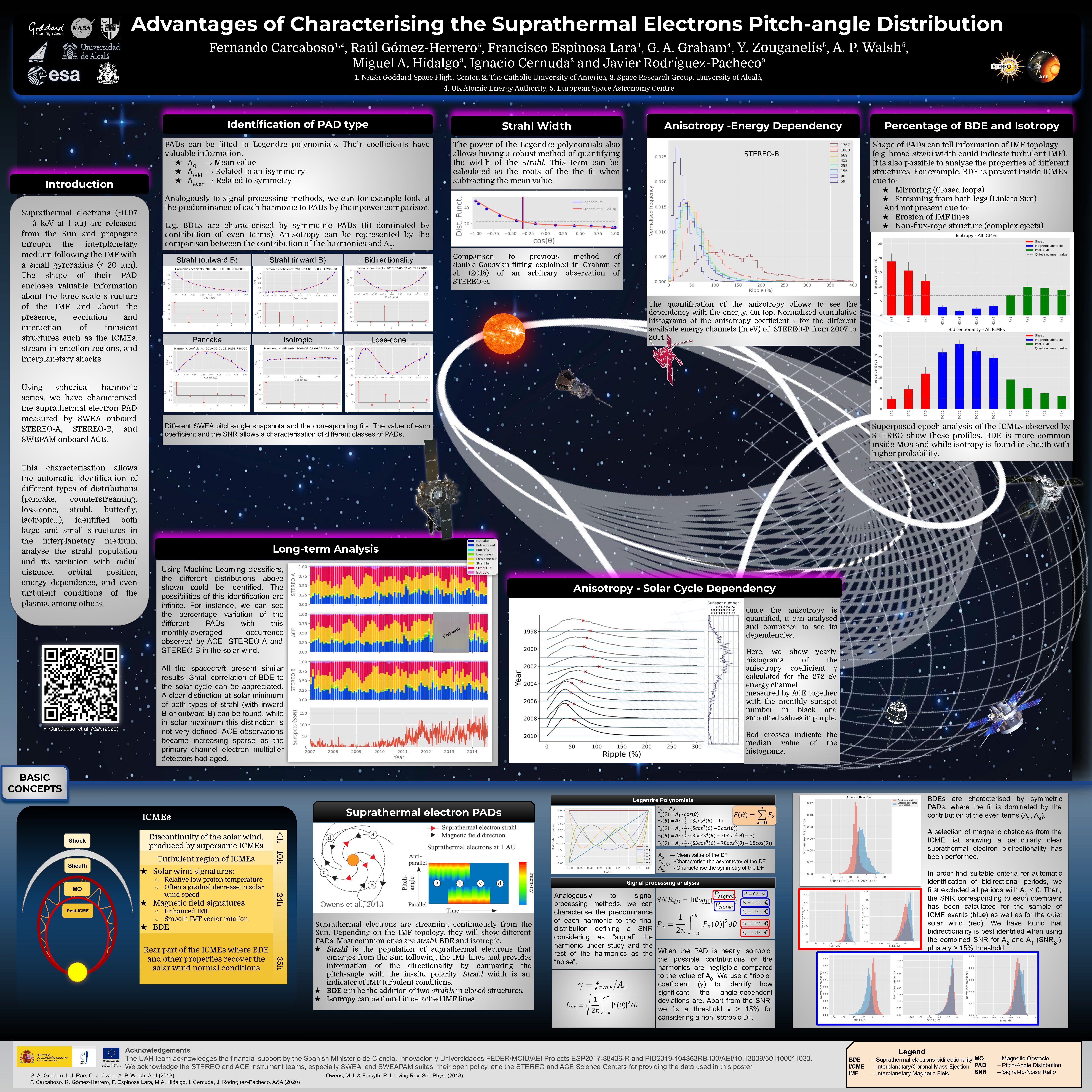Authors: Fernando Carcaboso (NASA Goddard Space Flight Center, The Catholic University of America), Raúl Gómez-Herrero (Space Research Group, University of Alcalá), Francisco Espinosa Lara (Space Research Group, University of Alcalá), G. A. Graham (UK Atomic Energy Authority), Y. Zouganelis (European Space Astronomy Centre), Miguel A. Hidalgo (Space Research Group, University of Alcalá), Ignacio Cernuda (Space Research Group, University of Alcalá) and Javier Rodríguez-Pacheco (Space Research Group, University of Alcalá)
Suprathermal electrons (~0.07 — 3 keV at 1AU) are released from the Sun and propagate through the interplanetary medium following the magnetic field lines with a small gyroradius (< 20 km). The shape of their pitch-angle distribution (PAD) encloses valuable information about the large-scale structure of the magnetic field and about the presence, evolution and interaction of transient structures such as interplanetary coronal mass ejections (ICMEs), stream interaction regions, and interplanetary shocks. Using spherical harmonic series, we have characterised the suprathermal electron PAD measured by SWEA onboard STEREO-A, STEREO-B, and SWEPAM onboard ACE. This characterisation allows the automatic identification of different types of distributions (pancake, counterstreaming, loss-cone, strahl, butterfly, isotropic…), identified both large and small structures in the interplanetary medium, analyse the strahl population and its variation with radial distance, orbital position, energy dependence, and even turbulent conditions of the plasma, among others. We present some statistical results of the transit of ICME’s bi-directionality and isotropy, and some energy dependency, as well as preliminary applications for Solar Orbiter and Parker Solar Probe.


